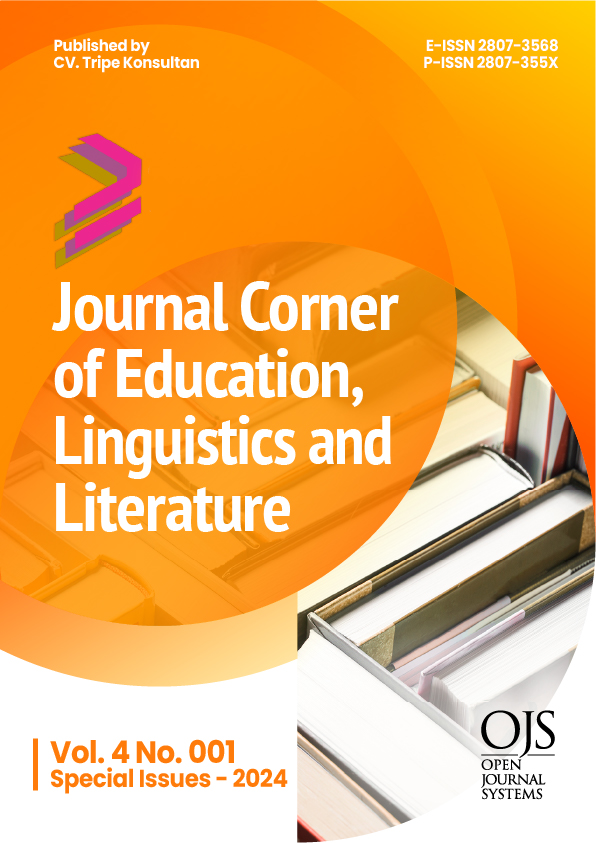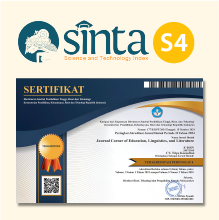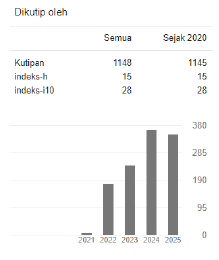Automatic Fish Feed Design and IoT Based Monitoring Using NodeMCU ESP8266 Microcontroller
 https://doi.org/10.54012/jcell.v4i001.426
https://doi.org/10.54012/jcell.v4i001.426
 Abstract views: 548
Abstract views: 548
 PDF downloads: 270
PDF downloads: 270
Keywords:
Fish Feed Design, IoT, NodeMCU ESP8266, MicrocontrollerAbstract
Fish farming in Pasaman Regency is growing rapidly, but still faces the challenge of uncontrolled feeding, which increases production costs and reduces water quality. This study develops an IoT-based automatic feeding system with NodeMCU ESP8266 to precisely set the schedule and amount of feeding, monitor water conditions in real-time, and enable remote control via smartphone. As a result, this system increases efficiency, reduces operational costs, and supports the sustainability of fish farming, so it is expected to be a model for the development of aquaculture in Indonesia. Aquaculture plays a significant role in food production, and efficient fish feeding is essential for optimal growth and resource management. Traditional feeding methods often lead to overfeeding, underfeeding, and inconsistent feeding schedules, affecting fish health and increasing operational costs. This study proposes the design and implementation of an automatic fish feeder integrated with an IoT-based monitoring system using the NodeMCU ESP8266 microcontroller. The system enables precise control over feeding times and portions, reducing feed waste and ensuring better fish nutrition. Real-time monitoring is achieved through IoT connectivity, allowing users to track feeding activities and environmental conditions remotely via a mobile application or web interface. The research focuses on system design, hardware development, software implementation, and performance evaluation. The results demonstrate the system's effectiveness in optimizing fish feeding, enhancing aquaculture efficiency, and providing a user-friendly monitoring solution. This innovation contributes to smart aquaculture practices, promoting sustainability and cost-effective fish farming.
Downloads
References
Abu- Khadrah , A., Issa, G.F., Aslam, S., Shahzad, M., Ateeq, K., & Hussain, M. (2022). IoT Based Smart Fish-Feeder and Monitoring System. 2022 International Conference on Business Analytics for Technology and Security, ICBATS 2022 . https://doi.org/10.1109/ICBATS54253.2022.9759058
Febrianti, F., Wibowo, SA, & Vendyansyah, N. (2021). IMPLEMENTATION OF IoT ( Internet Of Things) WATER QUALITY MONITORING AND ADMINISTRATION SYSTEM IN SMALL-SCALE CLEAN WATER MANAGEMENT. In Jurnal Mahasiswa Teknik Informatika) (Vol. 5, Issue 1).
Hendriawan, Subandi, Chandra, JC, & Ferdiansyah. (2023). PROTOTYPE OF WEB-BASED AUTOMATIC CHILI PLANT WATERING SYSTEM USING NODEMCU ESP8266 MICROCONTROLLER. 2nd National Seminar of Students of the Faculty of Information Technology (SENAFTI) , 2 (1).
Ibrahim, AM, & Setiyadi, D. (2021). PROTOTYPE OF REMOTE LIGHTING AND AIR CONDITIONING CONTROL WITH INTERNET NETWORK USING TELEGRAM APPLICATION BASED ON NODEMCU ESP8266. Infotech: Journal of Technology Information , 7 (1), 27–34. https://doi.org/10.37365/jti.v7i1.103
Mashur, D., Azhari, FM, & Zahira, P. (2020). Community Empowerment Through Freshwater Fish Cultivation Development in Pasaman Regency . 13 (1), 172–179.
Fernanda, R. (2022). Design and Implementation of Feeding System . 9 .
Rofii, A., Gunawan, S., & Mustaqim, A. (2021). DESIGN OF WAREHOUSE DOOR SECURITY SYSTEM BASED ON Internet of Things (IoT) AND FINGERPRINT SENSOR. JOURNAL OF ELECTRICAL ENGINEERING STUDIES , 6 (2).
Safitri, S., Sari, DM, Insani, CN, & Rachmini, SA (2022). IOT-Based Automatic Fish Feeder Control and Monitoring System. Journal of Informatics Management, Information Systems and Computer Technology (JUMISTIK) , 1 (1), 74–82. https://doi.org/10.70247/jumistik.v1i1.12
Downloads
Published
How to Cite
Issue
Section
License
Copyright (c) 2024 Muhammad Ali Sobri, Salman Topic

This work is licensed under a Creative Commons Attribution-ShareAlike 4.0 International License.
All articles published in the Journal Corner of Education, Linguistics, and Literature are licensed under the Creative Commons Attribution-ShareAlike License (CC BY-SA).

















